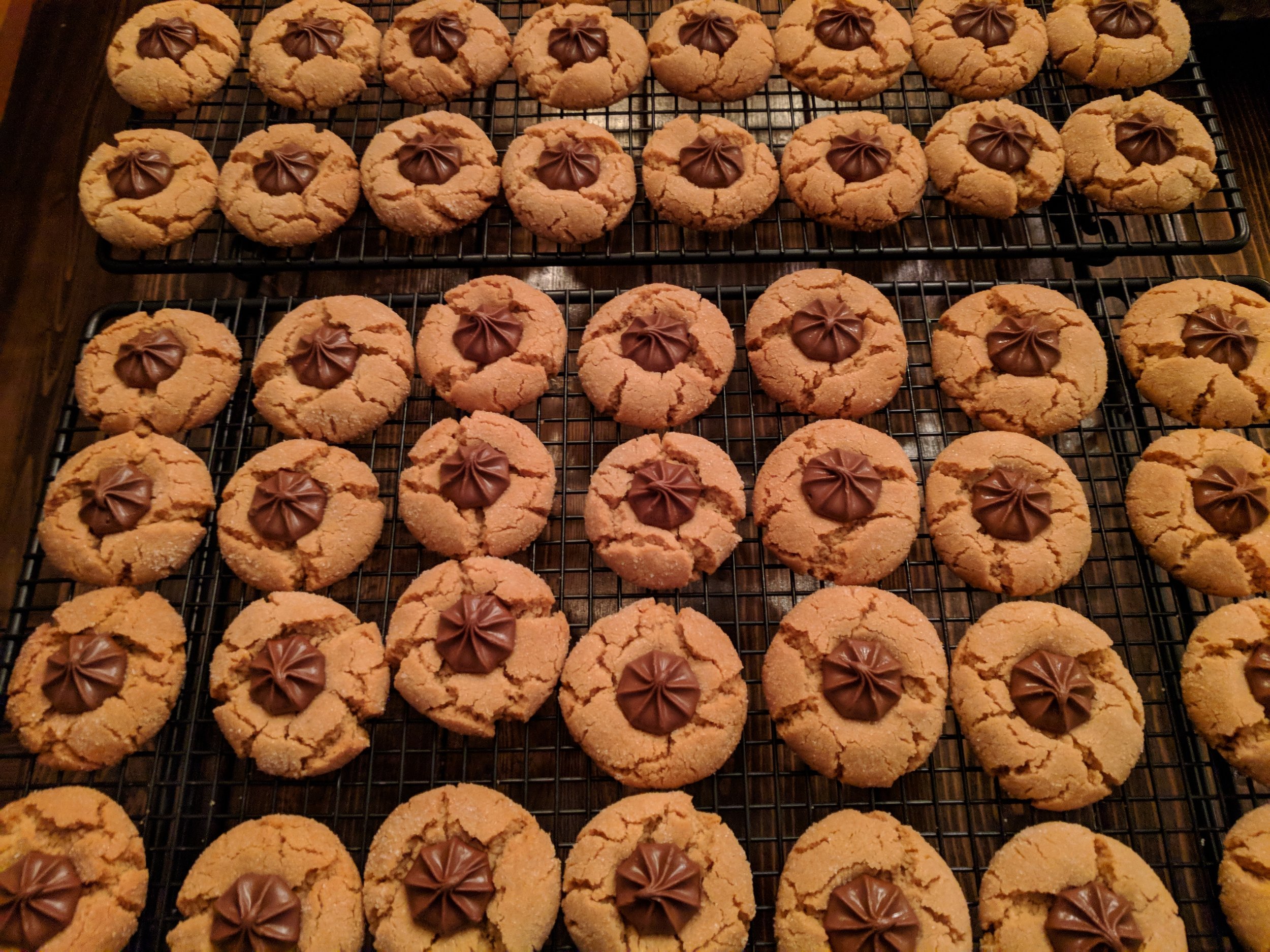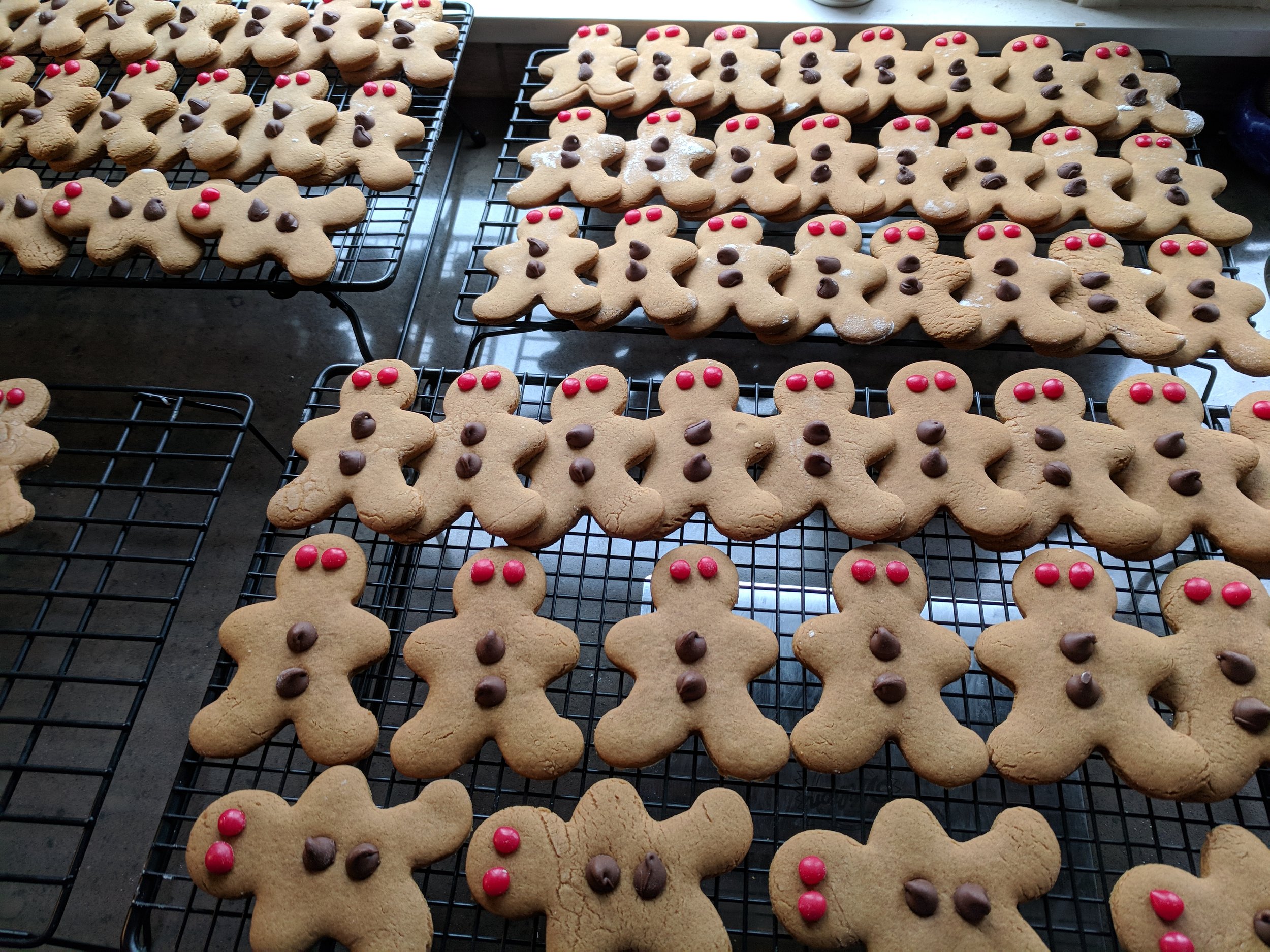Christmas Cookie Inflation Index, 2022 Update
(Source: Author.)
Last year, I was not prepared for the reaction to my annual updating of the Christmas Cookie Inflation Index (CCII). More precisely, I was not prepared for the partisan defensiveness and aggression from a portion of our audience regarding my annual (lighthearted) discussion of inflation. This year I’m going to try and blunt that reaction by issuing the following statement right at the top:
Nothing that I write here should be construed to be for or against any national political party or politician. I do not personally believe, and I am not trying to suggest, that the policies of a specific national politician or party has caused or alleviated inflation, gas prices, food prices, or the like. If anything, my comments and analysis here should be read in the context of a tension between top-down and bottom-up, not a conflict between left or right of center.
With that out of the way, let me explain what is going on: After many years of believing that Americans were being gaslit over inflation, after years of experiencing rising prices and declining portions, all while being told that there was no inflation, I decided to run a small experiment.
Every year, I spend the month of December baking Christmas cookies. Following the recipes of my grandmothers, I use the same basic ingredients to make over two-dozen varieties of confection. On December 1 of each year, I write down the price of ten of these items, all standard things in the kitchen of a baker.
Let me acknowledge: This is not a scientific way to measure inflation. I’m not pretending that the CCII is a better measure of overall inflation than the consumer price index (CPI). Yet, my index does have some distinct advantages. It is a set basket of goods that, in honor of my grandmothers, I refuse to change, so this is a true apples-to-apples (or sugar-to-sugar) comparison across years. There are none of the adjustments or substitutions found in other measurements of price changes (for more on adjustments and hedonic substitutions, see my article from 2021).
And I’m not suggesting that the Christmas Cookie Inflation Index is a broad and representative measure of the inflation pressure being felt by Americans, but the more it trends out of alignment with official measures, the more credibility it gives to the chorus of people who have been saying (and ridiculed for saying) that Americans are being gaslit on inflation.
Over the last year, my core baking ingredients have increased 12.0% in price, compared to an official rate of inflation of just 7.7%. Since I began tracking in 2019, the CCII has risen by 29.1% while the official inflation rate is 17.4% over the same period.
(Click to enlarge. Source: Author.)
My basket of cookie baking ingredients in 2019 cost $49.94. If those ingredients rose by just the official inflation rate, they would cost $58.62, a hefty increase. Instead, that same basket of ingredients costs $64.48.
I get these same baking ingredients from the same shelves, in the same store, in the same neighborhood that I have for decades. Official statisticians can substitute and adjust all they want, but this is my reality. This is your reality.
This is reality.
(Click to enlarge. Source: Author.)
In 2021, the debate was over the reality of inflation. Were we really experiencing inflation or are price increases merely a transitory hangover from the pandemic? By the end of the year, we had all seemingly acknowledged the reality of inflation and the debate shifted to the overall impact of it. You might remember this suggestion from Paul Krugman that dramatically rising prices wouldn’t disproportionately hurt the poor:
In other words, “inflation especially hurts the poor” sounds true to the rubes, but last December, Krugman saw no evidence or even a mechanism for it to occur. Months later, Krugman’s employer—The New York Times—ran a story detailing the obvious disproportionate impact of inflation on the poor. National Public Radio, along with The Washington Post came to the same conclusion. In 2022, the smart narrative finally acquiesced to the lived experience of the normies.
The takeaway isn’t that Krugman is a fool (though you are free to conclude that if you wish). The important insight is that, when equations and theory collide with reality, it is the former that must bend.
Smart People 2019: There won’t be inflation. (Rubes: Yes, there already is.)
Smart People 2020: There is no inflation. (Rubes: Yes, normal people experience it as a constant pressure.)
Smart People 2021: Inflation is transitory. (Rubes: No, it isn’t.)
Smart People 2022: Inflation is good. (Rubes: You have to be joking!)
The disparity in perspective and lived experience between the “Smart People” and the “Rubes” is the tension that prompted me to develop the Christmas Cookie Inflation Index in the first place. Inflation statistics are where official self-deception has most obviously morphed from art to science. When it comes to macroeconomic policy, we use the struggles of the poor as justification to run economic experiments on the poor (Quantitative Easing tied to inflation targeting, as one example—or Cheesecake Factory for another), all the while discounting the real negative impacts on the poor. It’s a feedback loop fueled by detachment and smugness.
Pronounced levels of inflation undermine that feedback loop. The more Americans that are unable to ignore or explain away inflation, the more tenuous the official narrative becomes. An economy in depression destroys jobs, businesses, and opportunity in a direct way that is easy to identify. An economy in the grips of inflation is disorienting, like being on a treadmill that slowly and secretly gets faster and steeper. We all experience things getting more difficult, but the cause is unclear. Worse, we know that things are harder and therefore [insert caricatured villain] must be to blame.
Deflation destroys economies, but inflation destroys societies.
Far too many of our front-line leaders like their placemaking bottom up and their economics top down. Yet, placemaking without bottom-up economics is a sideshow—a mere frivolity—while economics that doesn’t start with bottom-up placemaking squeezes the life out of cities, delivering us static, insolvent communities dominated by the partnered oligarchies of big business and big government.
We can have an economic system sensitive to the bottom-up experience of real people or we can have a system sensitive to the top-down priorities of the powerful and well-connected. We can’t have both.









Over 20 communities have used the Finance Decoder to turn dense spreadsheets into clear direction—proving that financial transparency doesn’t have to be dull.